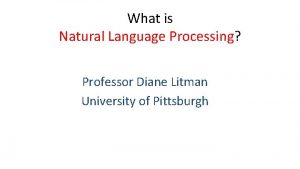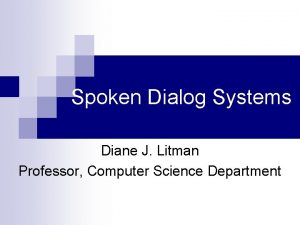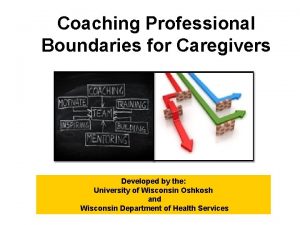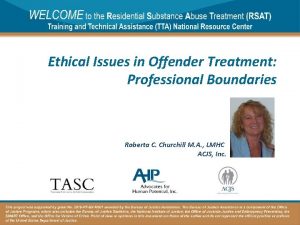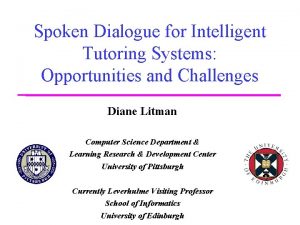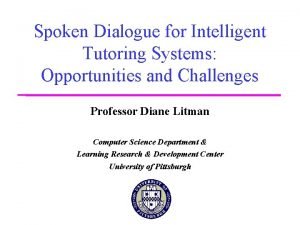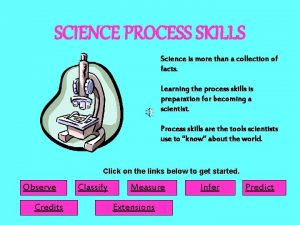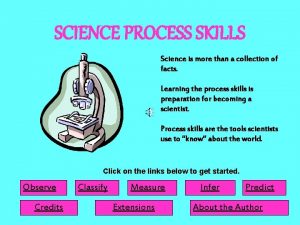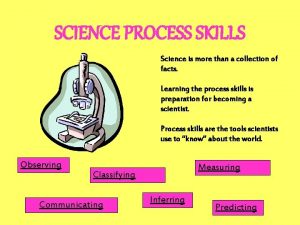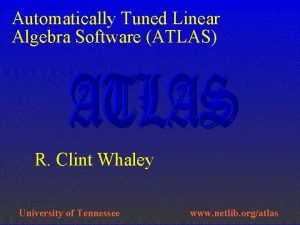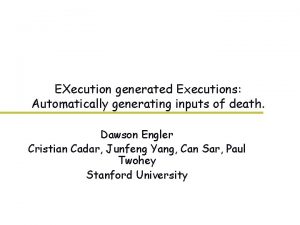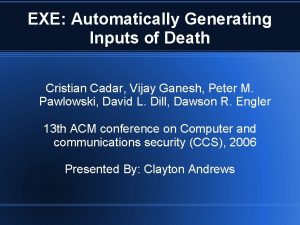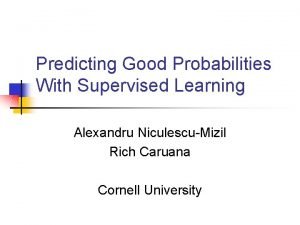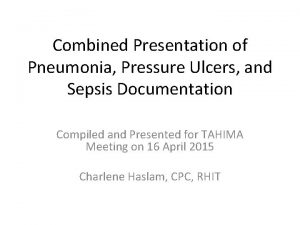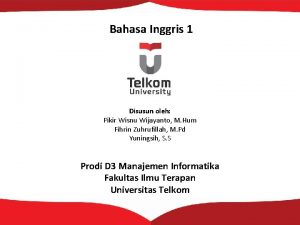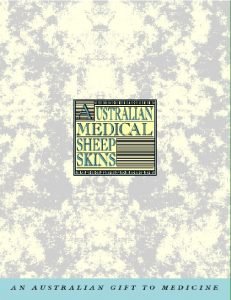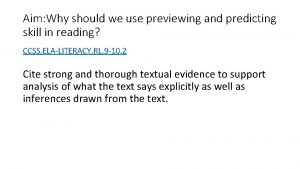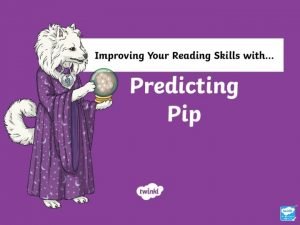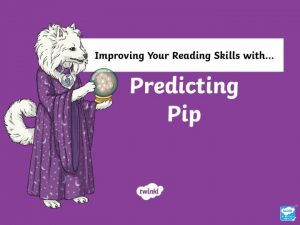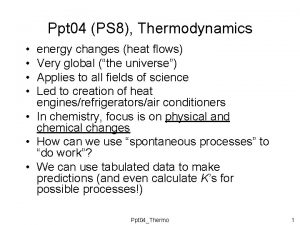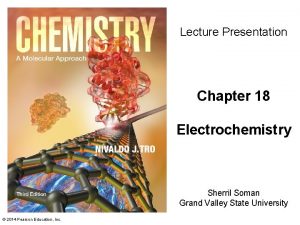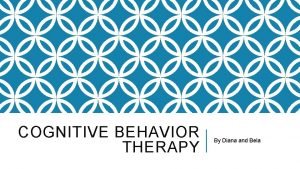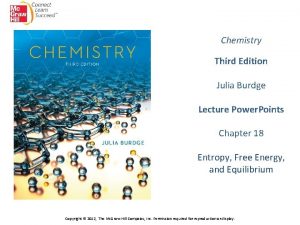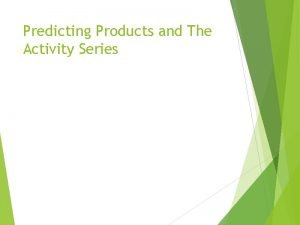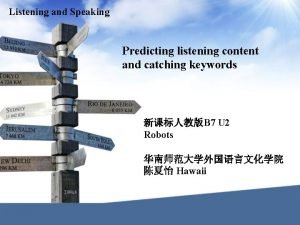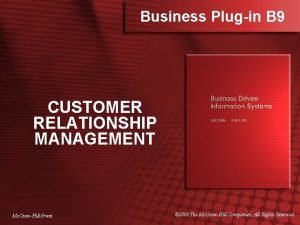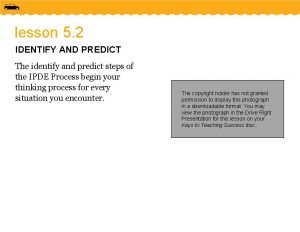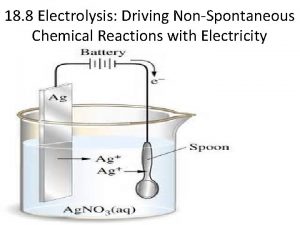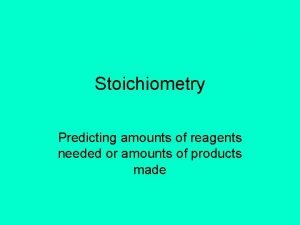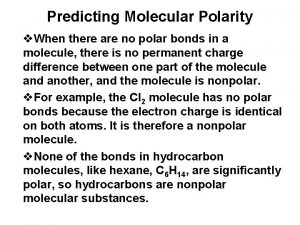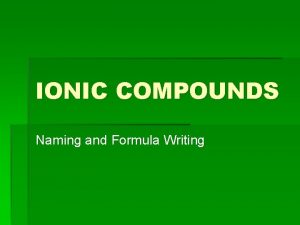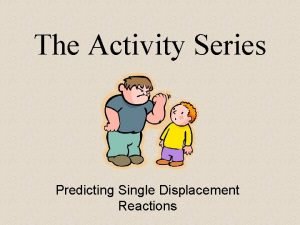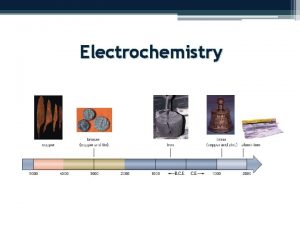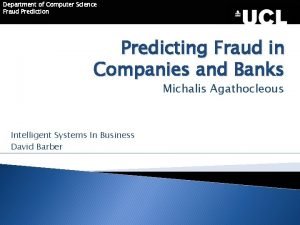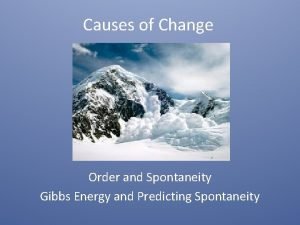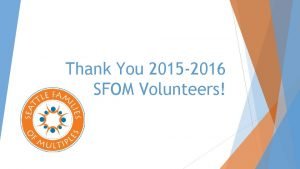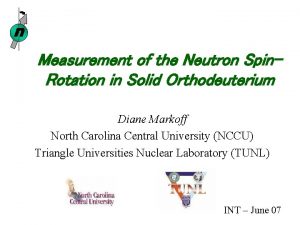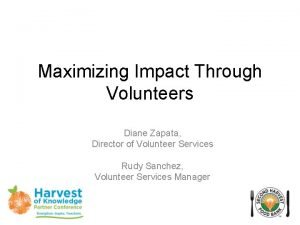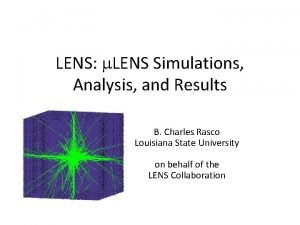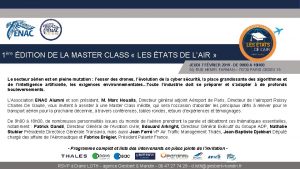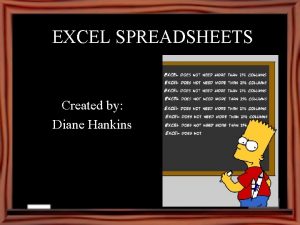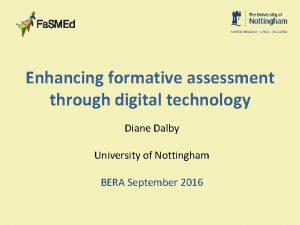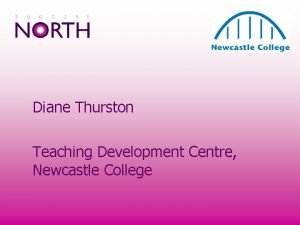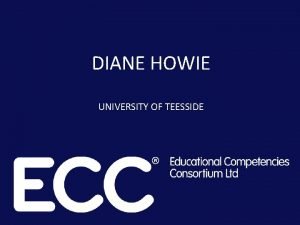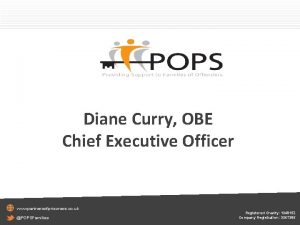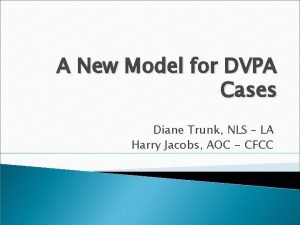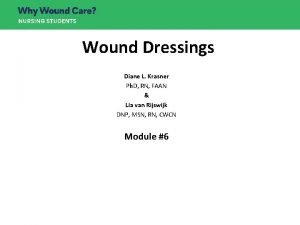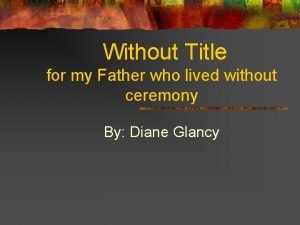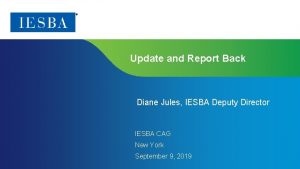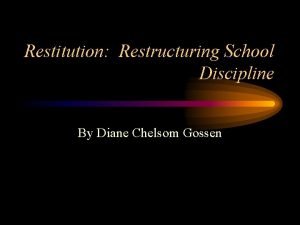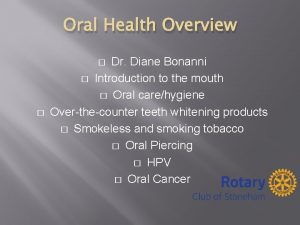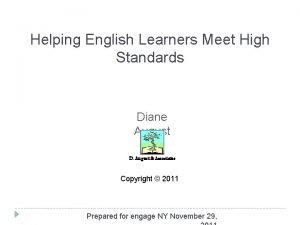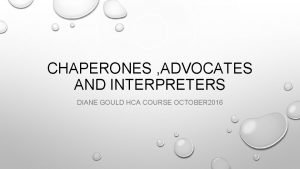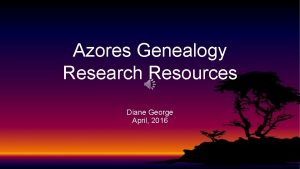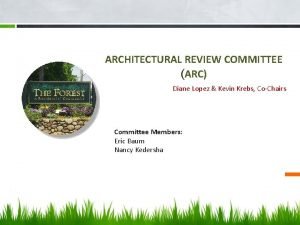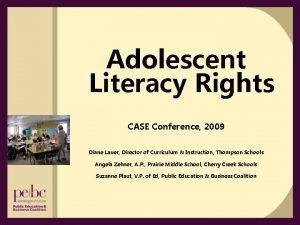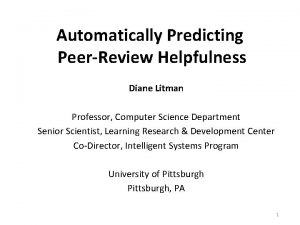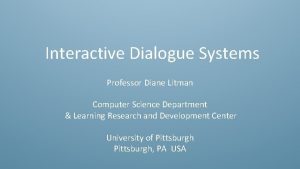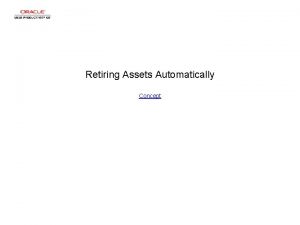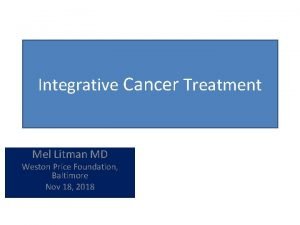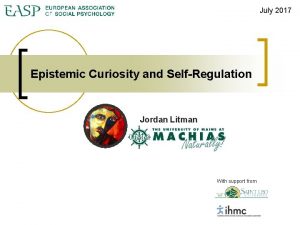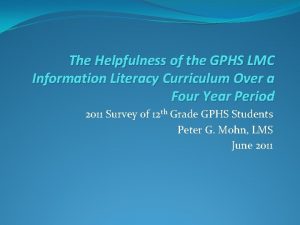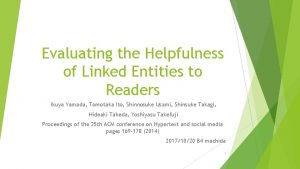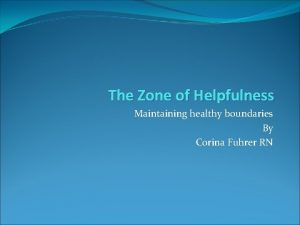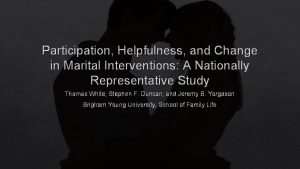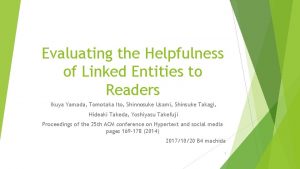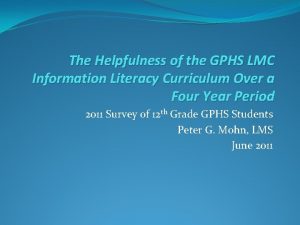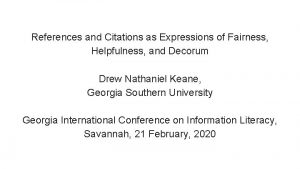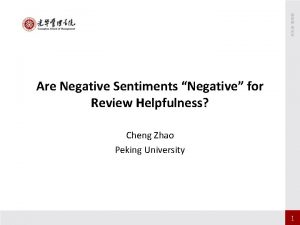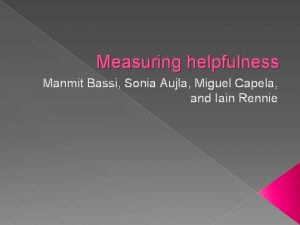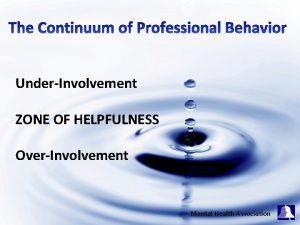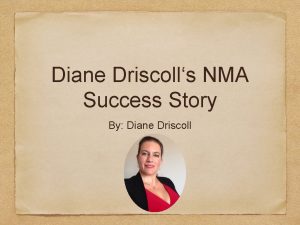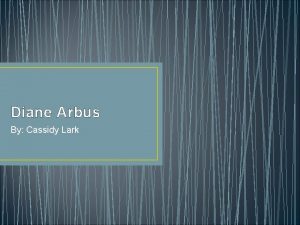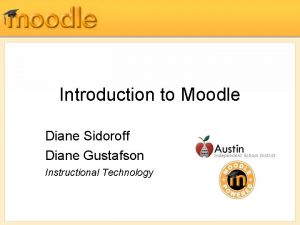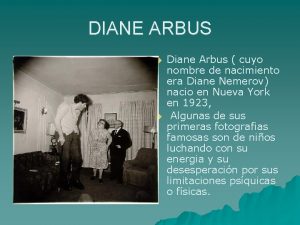Automatically Predicting PeerReview Helpfulness Diane Litman Computer Science





![SWo. RD: A web-based peer review system [Cho & Schunn, 2007] • Authors submit SWo. RD: A web-based peer review system [Cho & Schunn, 2007] • Authors submit](https://slidetodoc.com/presentation_image_h2/dcbb7c584ce3f0e009a4866eeab30890/image-6.jpg)
![SWo. RD: A web-based peer review system [Cho & Schunn, 2007] • Authors submit SWo. RD: A web-based peer review system [Cho & Schunn, 2007] • Authors submit](https://slidetodoc.com/presentation_image_h2/dcbb7c584ce3f0e009a4866eeab30890/image-7.jpg)


![SWo. RD: A web-based peer review system [Cho & Schunn, 2007] • Authors submit SWo. RD: A web-based peer review system [Cho & Schunn, 2007] • Authors submit](https://slidetodoc.com/presentation_image_h2/dcbb7c584ce3f0e009a4866eeab30890/image-10.jpg)
![SWo. RD: A web-based peer review system [Cho & Schunn, 2007] • • Authors SWo. RD: A web-based peer review system [Cho & Schunn, 2007] • • Authors](https://slidetodoc.com/presentation_image_h2/dcbb7c584ce3f0e009a4866eeab30890/image-11.jpg)



![Review Features and Positive Writing Performance [Nelson & Schunn, 2008] Solutions Summarization Understanding of Review Features and Positive Writing Performance [Nelson & Schunn, 2008] Solutions Summarization Understanding of](https://slidetodoc.com/presentation_image_h2/dcbb7c584ce3f0e009a4866eeab30890/image-15.jpg)



![Learned Localization Model [Xiong, Litman & Schunn, 2010] Learned Localization Model [Xiong, Litman & Schunn, 2010]](https://slidetodoc.com/presentation_image_h2/dcbb7c584ce3f0e009a4866eeab30890/image-19.jpg)




![Baseline Method: Assessing (Product) Review Helpfulness [Kim et al. 2006] • Data – Product Baseline Method: Assessing (Product) Review Helpfulness [Kim et al. 2006] • Data – Product](https://slidetodoc.com/presentation_image_h2/dcbb7c584ce3f0e009a4866eeab30890/image-24.jpg)


































![SWo. RD: A web-based peer review system [Cho & Schunn, 2007] • • Authors SWo. RD: A web-based peer review system [Cho & Schunn, 2007] • • Authors](https://slidetodoc.com/presentation_image_h2/dcbb7c584ce3f0e009a4866eeab30890/image-59.jpg)













- Slides: 72

Automatically Predicting Peer-Review Helpfulness Diane Litman Computer Science Department Learning Research & Development Center Intelligent Systems Program University of Pittsburgh (Joint project with Wenting Xiong, Chris Schunn, Kevin Ashley) 1

Context Speech and Language Processing for Education Learning Language (reading, writing, speaking) Tutors Scoring Processing Language Using Language (to teach everything else) Readability Tutorial Dialogue Systems / Peers Questioning & Answering CSCL Discourse Coding Lecture Retrieval

Context Speech and Language Processing for Education Learning Language (reading, writing, speaking) Tutors Scoring Processing Language Using Language (to teach everything else) Readability Tutorial Dialogue Systems / Peers Peer Review CSCL Discourse Coding Questioning & Answering Lecture Retrieval

Related Research Natural Language Processing - Helpfulness prediction for other types of reviews • e. g. , products, movies, books [Kim et al. , 2006; Ghose & Ipeirotis, 2010; Liu et al. , 2008; Tsur & Rappoport, 2009; Danescu-Niculescu-Mizil et al. 2009] • Other prediction tasks for peer reviews • Key sentence in papers [Sandor & Vorndran, 2009] • Important review features [Cho, 2008] • Peer review assignment [Garcia, 2010] Cognitive Science - Review implementation correlates with localization etc. [Nelson & Schunn, 2008] - Difference between student and expert reviews [Patchan et al. , 2009] 4

Outline • • • SWo. RD Improving Review Quality Identifying Helpful Reviews What is the Meaning of Helpfulness? Summary and Current Directions
![SWo RD A webbased peer review system Cho Schunn 2007 Authors submit SWo. RD: A web-based peer review system [Cho & Schunn, 2007] • Authors submit](https://slidetodoc.com/presentation_image_h2/dcbb7c584ce3f0e009a4866eeab30890/image-6.jpg)
SWo. RD: A web-based peer review system [Cho & Schunn, 2007] • Authors submit papers
![SWo RD A webbased peer review system Cho Schunn 2007 Authors submit SWo. RD: A web-based peer review system [Cho & Schunn, 2007] • Authors submit](https://slidetodoc.com/presentation_image_h2/dcbb7c584ce3f0e009a4866eeab30890/image-7.jpg)
SWo. RD: A web-based peer review system [Cho & Schunn, 2007] • Authors submit papers • Peers submit (anonymous) reviews – Instructor designed rubrics

8

9
![SWo RD A webbased peer review system Cho Schunn 2007 Authors submit SWo. RD: A web-based peer review system [Cho & Schunn, 2007] • Authors submit](https://slidetodoc.com/presentation_image_h2/dcbb7c584ce3f0e009a4866eeab30890/image-10.jpg)
SWo. RD: A web-based peer review system [Cho & Schunn, 2007] • Authors submit papers • Peers submit (anonymous) reviews • Authors resubmit revised papers
![SWo RD A webbased peer review system Cho Schunn 2007 Authors SWo. RD: A web-based peer review system [Cho & Schunn, 2007] • • Authors](https://slidetodoc.com/presentation_image_h2/dcbb7c584ce3f0e009a4866eeab30890/image-11.jpg)
SWo. RD: A web-based peer review system [Cho & Schunn, 2007] • • Authors submit papers Peers submit (anonymous) reviews Authors resubmit revised papers Authors provide back-reviews to peers regarding review helpfulness

12

Pros and Cons of Peer Review Pros • Quantity and diversity of review feedback • Students learn by reviewing Cons • Reviews are often not stated in effective ways • Reviews and papers do not focus on core aspects • Students do not have a process for organizing and responding to reviews

Outline • • • SWo. RD Improving Review Quality Identifying Helpful Reviews What is the Meaning of Helpfulness? Summary and Current Directions
![Review Features and Positive Writing Performance Nelson Schunn 2008 Solutions Summarization Understanding of Review Features and Positive Writing Performance [Nelson & Schunn, 2008] Solutions Summarization Understanding of](https://slidetodoc.com/presentation_image_h2/dcbb7c584ce3f0e009a4866eeab30890/image-15.jpg)
Review Features and Positive Writing Performance [Nelson & Schunn, 2008] Solutions Summarization Understanding of the Problem Localization Implementation

Our Approach: Detect and Scaffold • Detect and direct reviewer attention to key review features such as solutions and localization


Detecting Key Features of Text Reviews • Natural Language Processing to extract attributes from text, e. g. – Regular expressions (e. g. “the section about”) – Domain lexicons (e. g. “federal”, “American”) – Syntax (e. g. demonstrative determiners) – Overlapping lexical windows (quotation identification) • Machine Learning to predict whether reviews contain localization and solutions
![Learned Localization Model Xiong Litman Schunn 2010 Learned Localization Model [Xiong, Litman & Schunn, 2010]](https://slidetodoc.com/presentation_image_h2/dcbb7c584ce3f0e009a4866eeab30890/image-19.jpg)
Learned Localization Model [Xiong, Litman & Schunn, 2010]

Quantitative Model Evaluation (10 fold cross-validation) Review Feature Localization Solution Classroom Corpus N Baseline Accuracy Model Kappa Human Kappa History 875 53% 78% . 55 . 69 Psychology 3111 75% 85% . 58 . 63 History 1405 61% 79% . 55 . 79 Cog. Sci 5831 67% 85% . 65 . 86

Outline • • • SWo. RD Improving Review Quality Identifying Helpful Reviews What is the Meaning of Helpfulness? Summary and Current Directions

Review Helpfulness • Recall that SWo. RD supports numerical back ratings of review helpfulness – The support and explanation of the ideas could use some work. broading the explanations to include all groups could be useful. My concerns come from some of the claims that are put forth. Page 2 says that the 13 th amendment ended the war. Is this true? Was there no more fighting or problems once this amendment was added? … The arguments were sorted up into paragraphs, keeping the area of interest clera, but be careful about bringing up new things at the end and then simply leaving them there without elaboration (ie black sterilization at the end of the paragraph). (rating 5) – Your paper and its main points are easy to find and to follow. (rating 1)

Our Interests • Can helpfulness ratings be predicted from text? [Xiong & Litman, 2011 a] – Can prior product review techniques be generalized/adapted for peer reviews? – Can peer-review specific features further improve performance? • Impact of predicting student versus expert helpfulness ratings [Xiong & Litman, 2011 b]
![Baseline Method Assessing Product Review Helpfulness Kim et al 2006 Data Product Baseline Method: Assessing (Product) Review Helpfulness [Kim et al. 2006] • Data – Product](https://slidetodoc.com/presentation_image_h2/dcbb7c584ce3f0e009a4866eeab30890/image-24.jpg)
Baseline Method: Assessing (Product) Review Helpfulness [Kim et al. 2006] • Data – Product reviews on Amazon. com – Review helpfulness is derived from binary votes (helpful versus unhelpful): • Approach – Estimate helpfulness using SVM regression based on linguistic features – Evaluate ranking performance with Spearman correlation • Conclusions – Most useful features: review length, review unigrams, product rating – Helpfulness ranking is easier to learn compared to helpfulness ratings: Pearson correlation < Spearman correlation 24

Peer Review Corpus • Peer reviews collected by SWo. RD system – Introductory college history class – 267 reviews (20 – 200 words) – 16 papers (about 6 pages) • Gold standard of peer-review helpfulness – Average ratings given by two experts. • Domain expert & writing expert. • 1 -5 discrete values • Pearson correlation r =. 4, p <. 01 Rating Distribution 70 60 50 "Number of instances" 40 30 20 10 0 • Prior annotations 1 1, 5 2 2, 5 3 3, 5 4 4, 5 5 – Review comment types -- praise, summary, criticism. (kappa =. 92) – Problem localization (kappa =. 69), solution (kappa =. 79), … 25

Peer versus Product Reviews • Helpfulness is directly rated on a scale (rather than a function of binary votes) • Peer reviews frequently refer to the related papers • Helpfulness has a writing-specific semantics • Classroom corpora are typically small 26

Generic Linguistic Features (from reviews and papers) • Features motivated by Kim’s work type Label Structural STR Lexical UGR, BGR Syntactic SYN Semantic (adapted) 1. TOP pos. W, neg. W Features (#) rev. Length, sent. Num, question%, exclamation. Num tf-idf statistics of review unigrams (#= 2992) and bigrams (#= 23209) Noun%, Verb%, Adj/Adv%, 1 st. PVerb%, open. Class% counts of topic words (# = 288) 1; counts of positive (#= 1319) and negative sentiment words (#= 1752) 2 Meta-data META paper. Rating, paper. Rating. Diff (adapted) Topic words are automatically extracted from students’ essays using topic signature software (by Annie Louis) 2. Sentiment words are extracted from General Inquirer Dictionary * Syntactic analysis via MSTParser 27

Specialized Features • Features that are specific to peer reviews Type Cognitive Science Lexical Categories Localization Label Features (#) cog. S praise%, summary%, criticism%, plocalization%, solution% LEX 2 Counts of 10 categories of words LOC Features developed for identifying problem localization • Lexical categories are learned in a semi-supervised way (next slide) 28

Lexical Categories Tag Meaning Word list SUG suggestion should, must, might, could, needs, maybe, try, revision, want LOC location page, paragraph, sentence ERR problem error, mistakes, typo, problem, difficulties, conclusion IDE idea verb consider, mention LNK transition however, but NEG negative fail, hard, difficult, bad, short, little, bit, poor, few, unclear, only, more POS positive great, good, well, clearly, easily, effectively, helpful, very SUM summarization main, overall, also, how, job NOT negation not, doesn't, don't SOL solution revision, specify, correction Extracted from: 1. Coding Manuals 2. Decision trees trained with Bag-of-Words 29

Experiments • Algorithm – SVM Regression (SVMlight) • Evaluation: – 10 -fold cross validation • Pearson correlation coefficient r • (ratings) Spearman correlation coefficient rs (ranking) • Experiments 1. 2. 3. Compare the predictive power of each type of feature for predicting peer-review helpfulness Find the most useful feature combination Investigate the impact of introducing additional specialized features 30

Results: Generic Features Feature Type r rs STR 0. 604+/-0. 103 0. 593+/-0. 104 UGR 0. 528+/-0. 091 0. 543+/-0. 089 BGR 0. 576+/-0. 072 0. 574+/-0. 097 SYN 0. 356+/-0. 119 0. 352+/-0. 105 TOP 0. 548+/-0. 098 0. 544+/-0. 093 pos. W 0. 569+/-0. 125 0. 532+/-0. 124 neg. W 0. 485+/-0. 114 0. 461+/-0. 097 MET 0. 223+/-0. 153 0. 227+/-0. 122 • • All classes except syntactic and meta-data are significantly correlated Most helpful features: – STR (, BGR, pos. W…) • Best feature combination: STR+UGR+MET • , which means helpfulness ranking is not easier to predict compared to helpfulness rating (suing SVM regressison). 31

Results: Generic Features Feature Type r rs STR 0. 604+/-0. 103 0. 593+/-0. 104 UGR 0. 528+/-0. 091 0. 543+/-0. 089 BGR 0. 576+/-0. 072 0. 574+/-0. 097 SYN 0. 356+/-0. 119 0. 352+/-0. 105 TOP 0. 548+/-0. 098 0. 544+/-0. 093 pos. W 0. 569+/-0. 125 0. 532+/-0. 124 neg. W 0. 485+/-0. 114 0. 461+/-0. 097 MET 0. 223+/-0. 153 0. 227+/-0. 122 All-combined 0. 561+/-0. 073 0. 580+/-0. 088 STR+UGR+MET 0. 615+/-0. 073 0. 609+/-0. 098 • Most helpful features: – STR (, BGR, pos. W…) • Best feature combination: STR+UGR+MET • , which means helpfulness ranking is not easier to predict compared to helpfulness rating (suing SVM regression). 32

Results: Generic Features Feature Type r rs STR 0. 604+/-0. 103 0. 593+/-0. 104 UGR 0. 528+/-0. 091 0. 543+/-0. 089 BGR 0. 576+/-0. 072 0. 574+/-0. 097 SYN 0. 356+/-0. 119 0. 352+/-0. 105 TOP 0. 548+/-0. 098 0. 544+/-0. 093 pos. W 0. 569+/-0. 125 0. 532+/-0. 124 neg. W 0. 485+/-0. 114 0. 461+/-0. 097 MET 0. 223+/-0. 153 0. 227+/-0. 122 All-combined 0. 561+/-0. 073 0. 580+/-0. 088 STR+UGR+MET 0. 615+/-0. 073 0. 609+/-0. 098 • Most helpful features: – STR (, BGR, pos. W…) • Best feature combination: STR+UGR+MET • , which means helpfulness ranking is not easier to predict compared to helpfulness rating (using SVM regression). 33

Discussion (1) • Effectiveness of generic features across domains • Same best generic feature combination (STR+UGR+MET) • But… 34

Results: Specialized Features Feature Type r rs cog. S 0. 425+/-0. 094 0. 461+/-0. 072 LEX 2 0. 512+/-0. 013 0. 495+/-0. 102 LOC 0. 446+/-0. 133 0. 472+/-0. 113 STR+MET+UGR (Baseline) 0. 615+/-0. 101 0. 609+/-0. 098 STR+MET+LEX 2 0. 621+/-0. 096 0. 611+/-0. 088 STR+MET+LEX 2+TOP 0. 648+/-0. 097 0. 655+/-0. 081 STR+MET+LEX 2+TOP+cog. S 0. 660+/-0. 093 0. 655+/-0. 081 STR+MET+LEX 2+TOP+cog. S+LOC 0. 665+/-0. 089 0. 671+/-0. 076 • All features are significantly correlated with helpfulness rating/ranking • Weaker than generic features (but not significantly) • Based on meaningful dimensions of writing (useful for validity and acceptance) 35

Results: Specialized Features • Feature Type r rs cog. S 0. 425+/-0. 094 0. 461+/-0. 072 LEX 2 0. 512+/-0. 013 0. 495+/-0. 102 LOC 0. 446+/-0. 133 0. 472+/-0. 113 STR+MET+UGR (Baseline) 0. 615+/-0. 101 0. 609+/-0. 098 STR+MET+LEX 2 0. 621+/-0. 096 0. 611+/-0. 088 STR+MET+LEX 2+TOP 0. 648+/-0. 097 0. 655+/-0. 081 STR+MET+LEX 2+TOP+cog. S 0. 660+/-0. 093 0. 655+/-0. 081 STR+MET+LEX 2+TOP+cog. S+LOC 0. 665+/-0. 089 0. 671+/-0. 076 Introducing high level features does enhance the model’s performance. Ø Best model: Spearman correlation of 0. 671 and Pearson correlation of 0. 665. 36

Discussion (2) – Techniques used in ranking product review helpfulness can be effectively adapted to the peer-review domain • However, the utility of generic features varies across domains – Incorporating features specific to peer-review appears promising • provides a theory-motivated alternative to generic features • captures linguistic information at an abstracted level better for small corpora (267 vs. > 10000) • in conjunction with generic features, can further improve performance 37

Outline • • • SWo. RD Improving Review Quality Identifying Helpful Reviews What is the Meaning of Helpfulness? Summary and Current Directions

What if we change the meaning of “helpfulness”? • Helpfulness may be perceived differently by different types of people • Experiment: feature selection using different helpfulness ratings Ø Student peers (avg. ) Ø Experts (avg. ) Ø Writing expert Ø Content expert 39

Example 1 Difference between students and experts – Student rating = 7 – Expert-average = 2 The author also has great logic in this paper. How can we consider the United States a great democracy when everyone is not treated equal. All of the main points were indeed supported in this piece. • Student rating = 3 • Expert-average rating = 5 I thought there were some good opportunities to provide further data to strengthen your argument. For example the statement “These methods of intimidation, and the lack of military force offered by the government to stop the KKK, led to the rescinding of African American democracy. ” Maybe here include data about how … (omit 126 words) Note: Student rating scale is from 1 to 7, while expert rating scale is from 1 to 5 40

Example 1 Difference between students and experts • Student rating = 7 • Expert-average rating = 2 The author also has great logic in this paper. How can we consider the United States a great democracy when everyone is not treated equal. All of the main points were indeed supported in this piece. Paper content • Student rating = 3 • Expert-average rating = 5 I thought there were some good opportunities to provide further data to strengthen your argument. For example the statement “These methods of intimidation, and the lack of military force offered by the government to stop the KKK, led to the rescinding of African American democracy. ” Maybe here include data about how … (omit 126 words) Note: Student rating scale is from 1 to 7, while expert rating scale is from 1 to 5 41

Example 1 Difference between students and experts – Student rating = 7 – Expert-average rating = 2 The author also has great logic in this paper. How can we consider the United States a great democracy when everyone is not treated equal. All of the main points were indeed supported in this piece. praise • Student rating = 3 • Expert-average. Critique rating = 5 I thought there were some good opportunities to provide further data to strengthen your argument. For example the statement “These methods of intimidation, and the lack of military force offered by the government to stop the KKK, led to the rescinding of African American democracy. ” Maybe here include data about how … (omit 126 words) Note: Student rating scale is from 1 to 7, while expert rating scale is from 1 to 5 42

Example 2 Difference between content expert and writing expert – Writing-expert rating = 2 – Content-expert rating = 5 Your over all arguements were organized in some order but was unclear due to the lack of thesis in the paper. Inside each arguement, there was no order to the ideas presented, they went back and forth between ideas. There was good support to the arguements but yet some of it didnt not fit your arguement. • Writing-expert rating = 5 • Content-expert rating = 2 First off, it seems that you have difficulty writing transitions between paragraphs. It seems that you end your paragraphs with the main idea of each paragraph. That being said, … (omit 173 words) As a final comment, try to continually move your paper, that is, have in your mind a logical flow with every paragraph having a purpose. 43

Example 2 Difference between content expert and writing expert – Writing-expert rating = 2 – Content-expert rating = 5 Your over all arguements were organized in some order but was unclear due to the lack of thesis in the paper. Inside each arguement, there was no order to the ideas presented, they went back and forth between ideas. There was good support to the arguements but yet some of it didnt not fit your arguement. Argumentation issue • Writing-expert rating = 5 • Content-expert rating = 2 First off, it seems that you have difficulty writing transitions between paragraphs. It seems that you end your paragraphs with the main idea of each paragraph. That being said, … (omit 173 words) As a final comment, try to continually move your paper, that is, have in your mind a logical flow with every paragraph having a purpose. Transition issue 44

Difference in helpfulness rating distribution 45

Corpus • Previous annotated peer-review corpus - Introductory college history class - 16 papers - 189 reviews • Helpfulness ratings - Expert ratings from 1 to 5 • Content expert and writing expert • Average of the two expert ratings - Student ratings from 1 to 7 46

Experiment • Two feature selection algorithms • Linear Regression with Greedy Stepwise search (stepwise LR) � selected (useful) feature set • Relief Feature Evaluation with Ranker (Relief) � Feature ranks • Ten-fold cross validation 47

Sample Result: All Features • Feature selection of all features • • Students are more influenced by meta features, demonstrative determiners, number of sentences, and negation words Experts are more influenced by review length and critiques Content expert values solutions, domain words, problem localization Writing expert values praise and summary 48

Sample Result: All Features • Feature selection of all features • • Students are more influenced by meta features, demonstrative determiners, number of sentences, and negation words Experts are more influenced by review length and critiques Content expert values solutions, domain words, problem localization Writing expert values praise and summary 49

Sample Result: All Features • Feature selection of all features • • Students are more influenced by social-science features, demonstrative determiners, number of sentences, and negation words Experts are more influenced by review length and critiques Content expert values solutions, domain words, problem localization Writing expert values praise and summary 50

Sample Result: All Features • Feature selection of all features • • Students are more influenced by meta features, demonstrative determiners, number of sentences, and negation words Experts are more influenced by review length and critiques Content expert values solutions, domain words, problem localization Writing expert values praise and summary 51

Sample Result: All Features • Feature selection of all features • • Students are more influenced by meta features, demonstrative determiners, number of sentences, and negation words Experts are more influenced by review length and critiques Content expert values solutions, domain words, problem localization Writing expert values praise and summary 52

Other Findings • Lexical features: transition cues, negation, and suggestion words are useful for modeling student perceived helpfulness • Cognitive-science features: solution is effective in all helpfulness models; the writing expert prefers praise while the content expert prefers critiques and localization • Meta features: paper rating is very effective for predicting student helpfulness ratings 53

Outline • • • SWo. RD Improving Review Quality Identifying Helpful Reviews What is the Meaning of Helpfulness? Summary and Current Directions

Summary • Techniques used in predicting product review helpfulness can be effectively adapted to the peer-review domain – Only minor modifications to semantic and meta-data features – The utility of generic features (e. g. meta-data) varies between domains • Predictive performance can be further improved by incorporating specialized features capturing information specific to peer-reviews • The type of helpfulness to be predicted influences the utility of different features for automatic prediction – Generic features are more predictive when modeling students – Specialized (theory-supported) features are more useful for modeling experts 55

Future Work • Generate specialized features fully automatically – Combine helpfulness prediction with our prior study of automatically identifying problem localization and solution • Evaluate our model on data sets of other classes, and on reviews of not only writing but also argument diagrams • Perceived versus “true” helpfulness • Extrinisic evaluation in SWo. RD 56

Thank you! Questions? SWo. RD volunteers? https: //sites. google. com/site/swordlrdc/ 57

Related Work • Analysis of review helpfulness in Natural Language Processing – Predict helpfulness ranking of product reviews (Kim 2006) – Subjectivity analysis is useful for examining review helpfulness and their socio-economic impact (Ghose 2007) – Helpfulness depends on reviewers’ expertise, writing style, and the review timeliness (Liu 2008) – REVRANK: unsupervised algorithm for selecting the most helpful book reviews. (Tsur et al. 2009) 58
![SWo RD A webbased peer review system Cho Schunn 2007 Authors SWo. RD: A web-based peer review system [Cho & Schunn, 2007] • • Authors](https://slidetodoc.com/presentation_image_h2/dcbb7c584ce3f0e009a4866eeab30890/image-59.jpg)
SWo. RD: A web-based peer review system [Cho & Schunn, 2007] • • Authors submit papers Peers submit (anonymous) reviews Authors resubmit revised papers Authors provide back-reviews to peers regarding review helpfulness Note: Lots of text (sometimes even annotated)!

Phase I: Our Solution Argument diagramming Source texts AI: Guides preparing diagram and using it in writing Author creates Argument Diagram Author writes paper Phase II: Writing Peers review Argument Diagrams Peers review papers Author revises Argument Diagram AI: Guides reviewing Author revises paper

Argument diagram student created with LASAD 9 · (+) supports 1 · Hypothesis Link: 1 If: Participants are assigned to the active condition Then: they will be better at correctly identifying stimuli than participants in the passive condition. Active touch participants were able to more accurately identify objects because they had the use of sensitive fingertips in exploring the objects Link: 2 If: The participant has small hands Then: they will be better at recognizing objects than regardless of what condition they’re in. . 8 · Citation 7 · (+) supports Link: 1 (Craig 2001) 6 · Citation Link: 1 (Gibson 1962) Active touch is more effective than passive touch 11 · (+) supports 2 · Hypothesis Link: 1 Link: 2 Active touch improved through the development levels but passive touch stayed the same (hand size may play role) 20 · (+) supports 10 · Citation Link: 2 (Cronin 1977) Link: 2 17 · Citation Sensory perceptors in smaller hands are closer together, allowing for more accurate object acuity (Peters 2009) Link: 2

Features (1) • Computational linguistic features 1. Generic NLP features used in product review analysis (Kim et al. , 2006) Feature Type Features Structural review. Length, sent. Num, sent. Length. Ave, question%, exclams Lexical ten lexical categories § Domain words (#domain. Word) Syntactic nouns%, verbs%, 1 st. PVerb%, adjective/adverb%, open. Class% § 288 words extracted from all students’ papers § Using topic-lexicon extraction software provided by Annie Louis Semantic #domain. Word, #pos. Word, #neg. Word § Sentiment words (#pos. Word, #neg. Word) § 1915 positive and 2291 negative words from General Inquirer Dictionaries 62

Features (2) • Computational linguistic features 2. Localization features for automatically predicting problem localization (Xiong and Litman, 2010) Feature Example/Description reg. Tag% “On page five, …” d. Determiner “To support this argument, you should provide more …. ” § window. Size The amount of context information regarding the related paper window. Size § For each review sentence, we search for the most likely referred window of words in the related paper, and window. Size is the average number of words of all windows § s 63

Features (3) • Non-linguistic features 1. Cognitive-science features (Nelson and Schunn, 2009) • Praise%, problem%, summary% • Localization%, solution% 2. Social-science features (Kim et al. , 2006; Danescu-Niculescu-Mizil et al. , 2009) • p. Rating – paper rating: • p. Rating. Diff – variation: 64

Result (1) • Feature selection of computational linguistic features • • All but writing expert value questions Students favor clear sign of logic flow and opinions (e. g. suggestions, transitions, positive words, and paper context) • Experts prefer longer reviews 65

Result (1) • Feature selection of computational linguistic features • • All but writing expert value questions Students favor clear sign of logic flow and opinions (e. g. suggestions, transitions, positive words, and paper context) • Experts prefer longer reviews 66

Result (1) • Feature selection of computational linguistic features • • All but writing expert value questions Students favor clear sign of logic flow and opinions (e. g. suggestions, transitions, positive words, and paper context) • Experts prefer longer reviews 67

Result (1) • Feature selection of computational linguistic features • • All but writing expert value questions Students favor clear sign of logic flow and opinions (e. g. suggestions, transitions, positive words, and paper context) • Experts prefer longer reviews 68

Result (2) • Feature selection of non-linguistic features • Both students and experts like solutions • Students are more influenced by paper rating • Students, content expert, and expert average favor localized reviews 69

Result (2) • Feature selection of non-linguistic features • • • Both students and experts like solutions Students are more influenced by paper rating Students, content expert, and expert average favor localized feedback 70

Result (2) • Feature selection of non-linguistic features • • • Both students and experts like solutions Students are more influenced by paper rating Students, content expert, and expert average favor localized feedback 71

Result (2) • Feature selection of non-linguistic features • • • Both students and experts like solutions Students are more influenced by paper rating Students, content expert, and expert average favor localized feedback 72
 Diane litman
Diane litman Diane litman
Diane litman Zone of helpfulness
Zone of helpfulness Zone of helpfulness
Zone of helpfulness Professional boundaries for caregivers
Professional boundaries for caregivers Litman
Litman Litman
Litman Science process skills predicting
Science process skills predicting Science process skills predicting
Science process skills predicting Measuring in science process skills
Measuring in science process skills Predicting science process skills
Predicting science process skills Automatically tuned linear algebra software
Automatically tuned linear algebra software Exe: automatically generating inputs of death
Exe: automatically generating inputs of death Exe: automatically generating inputs of death
Exe: automatically generating inputs of death Is your a subject
Is your a subject Predicting products of chemical reactions
Predicting products of chemical reactions Predicting products of chemical reactions
Predicting products of chemical reactions More predicting products of chemical reactions
More predicting products of chemical reactions Alexandru niculescu-mizil
Alexandru niculescu-mizil Combination reaction example
Combination reaction example Highest braden score
Highest braden score Makalah previewing and predicting
Makalah previewing and predicting Braden scale for predicting pressure sore risk
Braden scale for predicting pressure sore risk What is the aim of previewing and predicting
What is the aim of previewing and predicting Predicting pip
Predicting pip Predicting pip
Predicting pip Vsepr theory predicts
Vsepr theory predicts Single replacement products
Single replacement products Thermodynamics ppt
Thermodynamics ppt Predicting spontaneity
Predicting spontaneity Vertical arrow technique
Vertical arrow technique Predicting spontaneity
Predicting spontaneity Predicting products
Predicting products How to identify a precipitate
How to identify a precipitate Predicting content in listening
Predicting content in listening The evolution of crm is reporting analyzing and predicting
The evolution of crm is reporting analyzing and predicting The first step in the ipde process is
The first step in the ipde process is Predicting products of electrolysis
Predicting products of electrolysis Stoichiometry predicting amounts in reactions
Stoichiometry predicting amounts in reactions Predicting nba games using neural networks
Predicting nba games using neural networks Predicting molecular polarity
Predicting molecular polarity Predicting and naming ionic compounds
Predicting and naming ionic compounds Predicting single replacement reactions
Predicting single replacement reactions Building redox tables
Building redox tables Predicting fraud
Predicting fraud Complete the following table on reaction spontaneity
Complete the following table on reaction spontaneity Diane wies
Diane wies Diane liu md
Diane liu md Diane markoff
Diane markoff Diane zapata
Diane zapata Thin lens simulation
Thin lens simulation Pilate master class
Pilate master class Diane hankins
Diane hankins Diane dalby
Diane dalby Diane thurston
Diane thurston Diane howie
Diane howie Diane curry
Diane curry Ce matin paroles
Ce matin paroles Diane trunk
Diane trunk Diane krasner
Diane krasner Poem without title
Poem without title Diane jules
Diane jules Diane gossen
Diane gossen Le geai gélatineux geignait dans le jasmin
Le geai gélatineux geignait dans le jasmin Gruen von behrens
Gruen von behrens Diane august
Diane august Diane eco tour and travel
Diane eco tour and travel Diane gould advocates
Diane gould advocates Dr diane george
Dr diane george Diane krebs
Diane krebs Diane lauer
Diane lauer Diane frasier nih
Diane frasier nih The father in the poem without title
The father in the poem without title
